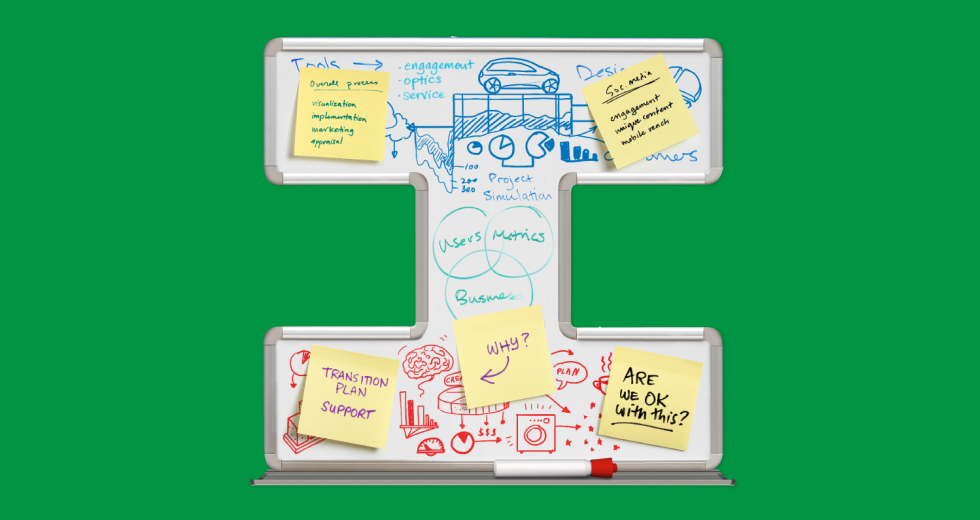(īdē’āSHən), n.
The formation of concepts or ideas
If you’ve plastered a wall, door or whiteboard in sticky notes while brainstorming new ideas to solve an office problem, you’ve ideated. If you’ve sat around a table with a team of collaborators, throwing out every possible approach to overcoming a market challenge, you’ve ideated. If you’ve stewed over a cup of coffee, contemplating every imaginable solution to a particularly vexing conundrum, you’ve ideated.
Ideation is the process of generating new ideas through open-minded brainstorming. Ideation is exciting, it’s creative, and it’s a great teambuilding activity.
The problem? When you’re looking for a competitive advantage in a crowded market on a shoestring budget, it’s easy to throw together a brainstorming session and feel like you’re making progress. But for IDEO, the international design and consulting firm, the process for human-centered design doesn’t start with ideation. It starts with a research phase called “inspiration” to identify the actual cause and source of the problem to be solved. Next comes ideation, followed up by implementation.
Wired magazine estimates that 95 percent of innovation budgets are invested on pre-launch efforts, like ideation workshops. But disruptive innovation isn’t really the result of new ideas. Innovation is the result of carefully vetted, funded and implemented good ideas that solve real problems. Research shows that companies which host ideation sessions don’t actually innovate new products at faster rates or with more success. The companies that produce the most innovative products are the ones that invest in bringing good ideas to market. IDEO describes innovation as the intersection between viability, feasibility and desirability — skipping the phases before and after ideation makes it a lot less likely you’ll achieve the innovation intersection.
Why is the buzz all about the ideation phase? It’s fun, easy and immediately gratifying. Ideation feels good. Like buying new fitness gear on Amazon in preparation for your ambitious New Year’s resolution, and having it delivered now by drone. Implementation is the part where you get up early, exercise and eat healthy for weeks before you even begin to see the results of your labor.
By definition, ideation is the act, capacity or process for forming new ideas. IDEO’s ideation methods are both effective and popular — ideation doesn’t have to happen on a Post-it or in a jam session.
At Google, employees don’t have to wait for an ideation session to explore new ideas or have their ideas heard. They are encouraged to spend 20 percent of their time on new projects and ideas. Google has created nine principles for innovation to ensure that new ideas are generated, evaluated and the good ones brought to market. Google’s first principle of innovation is that “good ideas come from anywhere,” which means good ideas don’t have to come from the top and trickle down or be generated from a specific type of meeting. If you create a culture that respects good ideas, you’ll have more good ideas. Whether or not you innovate depends on what you do with those ideas once they’re generated.



